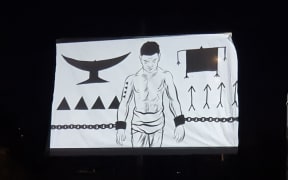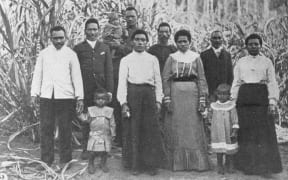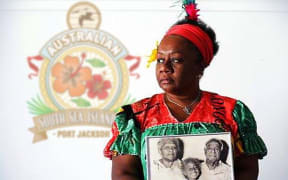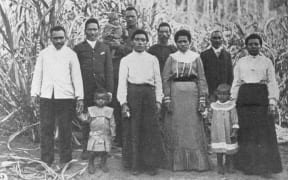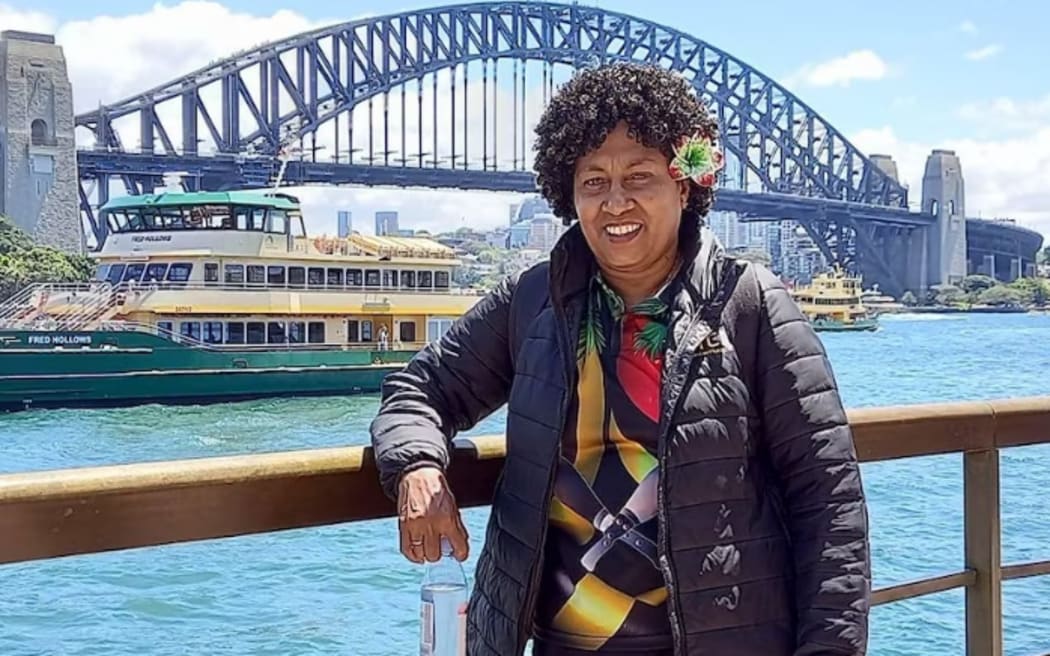
Lilon Bongmatur's ancestor was taken from a beach on Ambrym Island, Vanuatu. Photo: Supplied
By Hilda Wayne, Kim Lester, Rachael Lucas and Dan Smith for the ABC's Sistas, Let's Talk
Lilon Bongmatur's grandfather was just a boy when he was kidnapped from a Vanuatu beach.
At first, he and the other children didn't realise the threat. Missionaries and traders were common on Ambrym Island, and they thought nothing of the ship coming towards the beach near the village at Dip Point.
By the time they realised, it was too late. Bongmatur's grandfather was taken.
From the 1860s until 1901, trading ships from Australia would visit South Pacific islands looking for people to work on plantations.
Many were tricked aboard or even kidnapped, in a practice now known as blackbirding.
"They were taken against their will," Bongmatur told the ABC's Sistas, Let's Talk.
"They were treated very badly... they had malnutrition, they had health problems because it was a long journey to Australia."
People like Bongmatur's grandfather were sent to sugar plantations to work in hostile conditions for almost no money. Some were not paid at all.
Fifteen percent of those blackbirded to Australia died from exposure to illnesses, malnutrition, or mistreatment.
Then in 1901, after Australia became a federation, it passed the White Australia Policy, aimed at banning people of non-European ethnicities from entering or working in the country.
The thousands of Pacific Island workers who had been in Australia for decades were suddenly deported.
About 1500 people remained and became known as Australian South Sea Islanders.
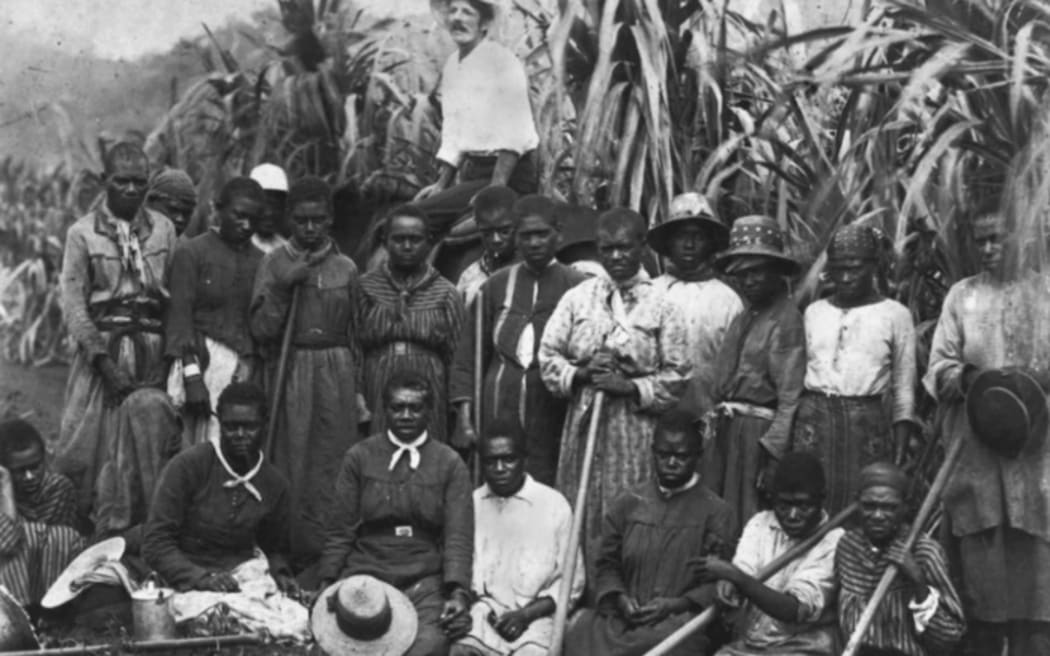
Many South Sea Islanders worked in Queensland, like these workers at a Cairns sugarcane plantation. Photo: Supplied/ State Library of Queensland
Trying to reconnect
Displaced and having lost their connections to their island homelands, the South Sea Islanders were left to survive on the fringes of Australian society, and their descendants grew up not really knowing where they came from.
For years, their main connection to their past was through oral storytelling.
Their grandparents or great-grandparents may have been taken from Vanuatu, Solomon Islands, Papua New Guinea, Kiribati, Tuvalu, New Caledonia or Fiji, but they knew very little about the places and people they left behind.
But as international travel became more affordable and with the rise of social media, more and more South Sea Islanders re-established connections to their culture and history.
And as they find cousins in the Pacific, their Pacific relatives are finally learning what happened to the ancestors who were taken.
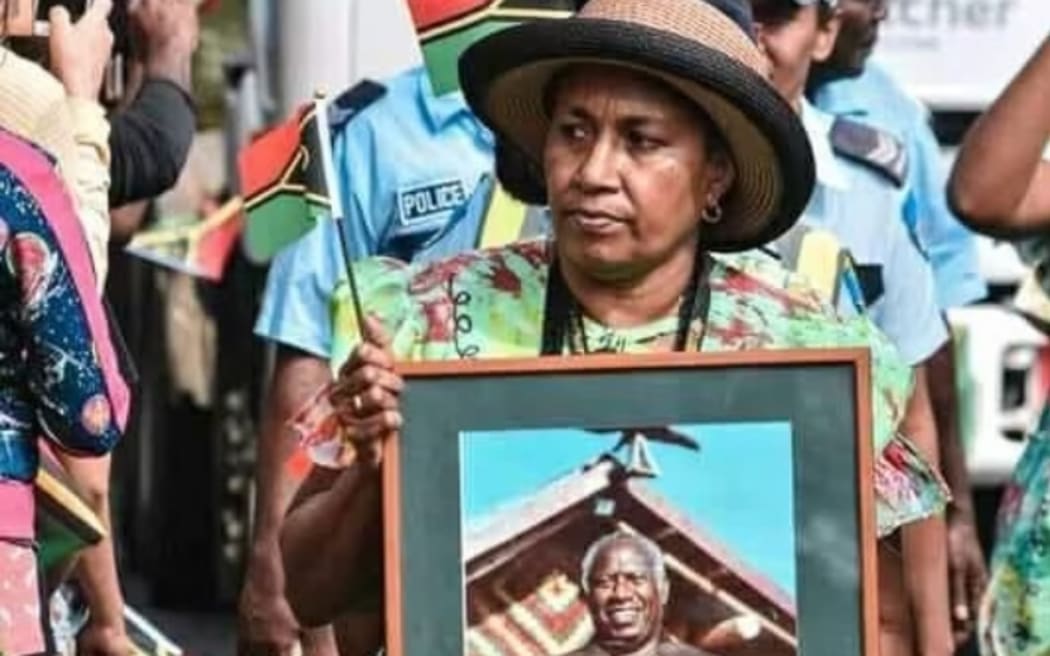
Lilon Bongmatur with a photo of her father, Willie, a name brought back from the cane fields of Queensland. Photo: Supplied
While Bongmatur has not found her own relatives in Australia, she is working to help people from the Australian South Sea Islander community connect with their relatives in Vanuatu.
"It started way, way back, but I only came in in 2014 when I organised the first family reunion for one of my relatives here," she said.
"It was an emotional event because the blackbirding days were devastating for our families. It was passed on from generation to generation. And it was hard.
"Over the years, people tried to get over what happened.
"I guess the reunification is building back that memory and reconnecting values that were taken away."
Matching stories to reunite families
Sonia Minniecon is a descendant of the First Nations Kabi people and of Australian South Sea Islanders from Vanuatu.
She runs an organisation called Blackbird International, which connects South Sea Islanders with their families in the Pacific and runs tours so they can visit their islands.
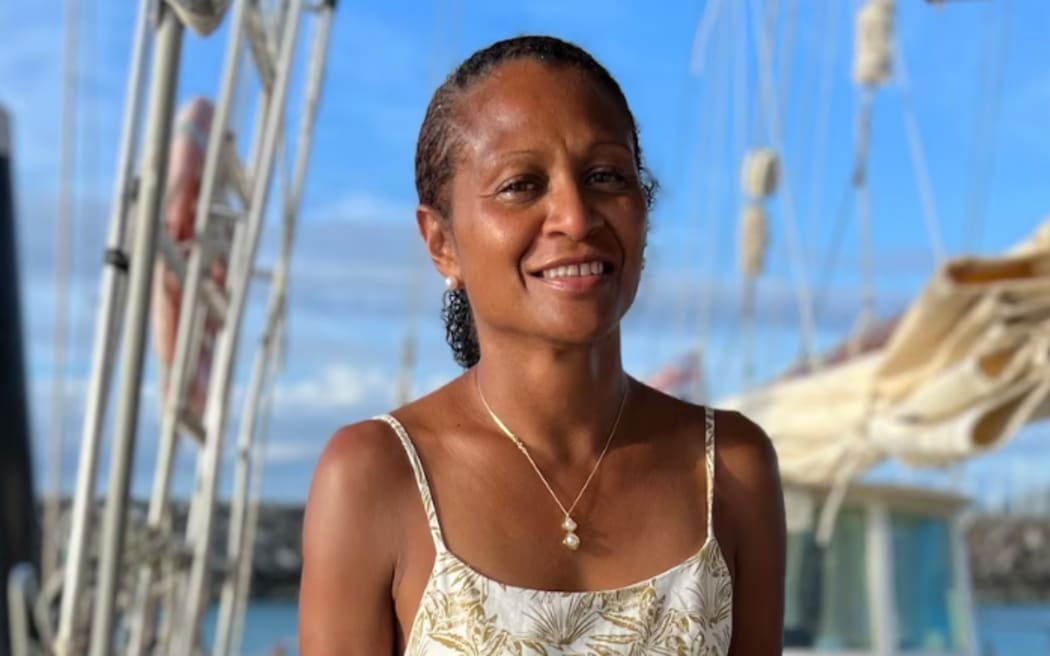
Sonia Minniecon runs Blackbird International, reuniting families. Photo: Supplied
Her journey began as her parents grew older and became unwell, and she wanted to reconnect for them.
"For them, knowing that there were actually people, descendants of uncles or brothers that were taken, still living and alive in Australia... we thought that was such an important part of our family.
"We know that our community ... is so large in Queensland and we wanted to help them on their journey to find family. So we established Blackbird International in 2003."
Minniecon's work involves trying to comb through plantation owners' records and shipping records and matching them with oral stories from the islands and other communities.
"Once you know who you are and where you come from, it just makes you a whole person," she said.
"There are still families over there that don't know what happened to their brother or uncle. And the fact that they could even have descendants, you know, cousins, family, just blows people away.
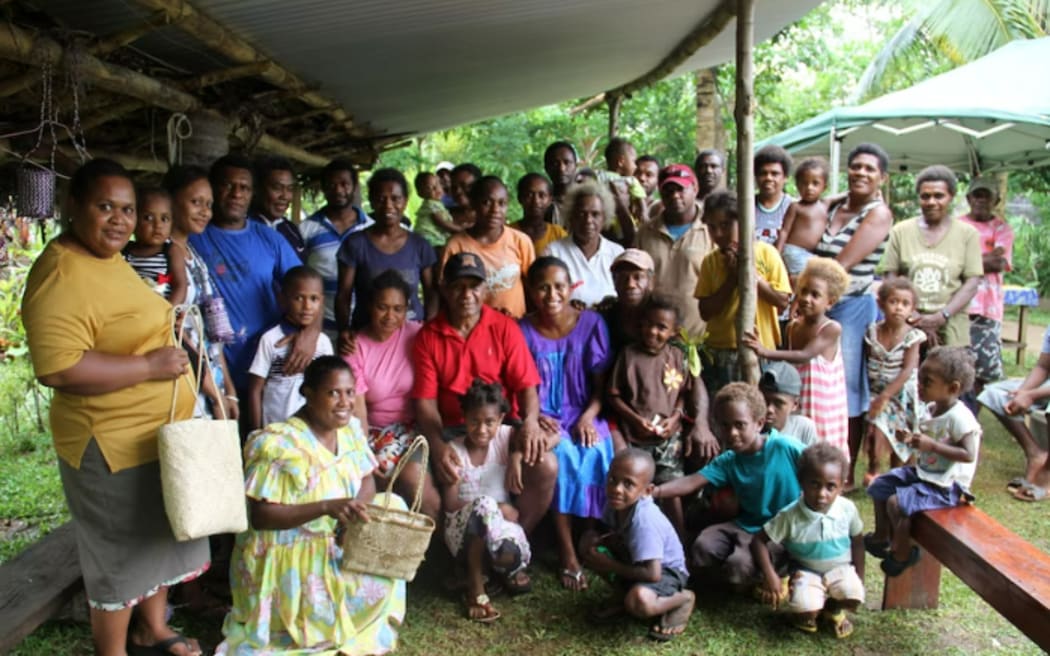
Sonia Minniecon met her wider family on her maternal side on Espiritu Santo in Vanuatu. Photo: Supplied
"One story we had was a family here in Australia that had a story that'd been told to them. They weren't sure how true it was, [but] it was about the salt water, their island, and certain animals that connected them.
"And we went back to Vanuatu and [there was] a family who had that same story. And that was a direct connection. An oral history from that island and that village, you know, that's how we connect to places through those stories.
"Many times, the ship owners just wrote the island from which they were taken. So, in Australia, there were a lot of families with the surname of Ambrym or Obah or Tanna, the islands which they came from.
"So that's another way in which we connect families."
'Being a part of that culture ... was beautiful'
Reconnecting families, and the moment they meet, is a time of happiness and joy.
For Minniecon herself, returning to her ancestral lands was a beautiful feeling.
"I think that it takes a village to raise a child, but when you go back over there, you see that, and you feel it," she said.
"We had a ceremony for my dad. That was the first time we went back, and they performed what they call a Rom. It's a men's ceremony, so the women shouldn't be a part of that, but because it was for my dad, they were allowed to be part of that ceremony.
"Men are dressed ... in their traditional costumes ... and they've got big masks on which are vibrantly coloured, and they've got long cones on their arms with shells and shakers.
"We're standing in this circle and there's no one around. You can feel the ground shake because they're coming down and you can hear whistling and noises as they come into the circle and they're dancing. It's like they're floating.
"Being a part of that culture, knowing it's yours, was beautiful."
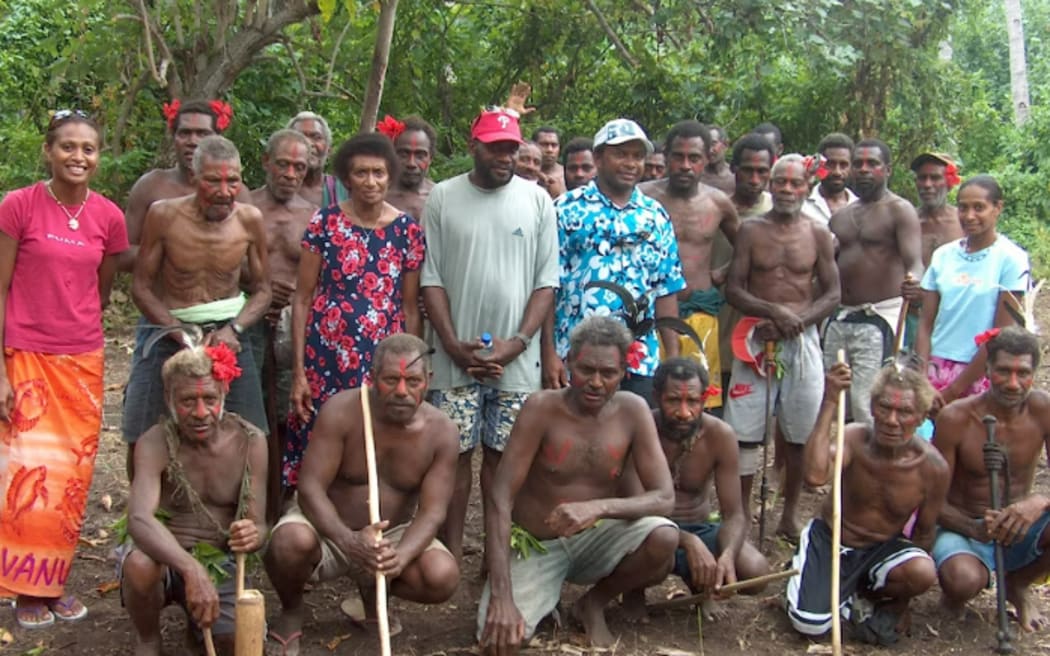
Sonia Minniecon with her paternal family on Ambrym Island after a Rom ceremony held in honour of her late father. Photo: Supplied
Since then, Minniecon has helped reunite other families torn apart by blackbirding.
When families reunite, she said, although there were sometimes language difficulties, there was joy, happiness, acknowledgement and welcome.
"Everyone starts looking at each other's faces and they [see]... the resemblances of people and the names and the similarity.
"And I know of others that have gone back and now carry traditional names, which is beautiful."
In the process of rediscovering her own family, Minniecon too found her traditional name.
"It's actually Lena. It was my grandmother from Ambrym."
- ABC
